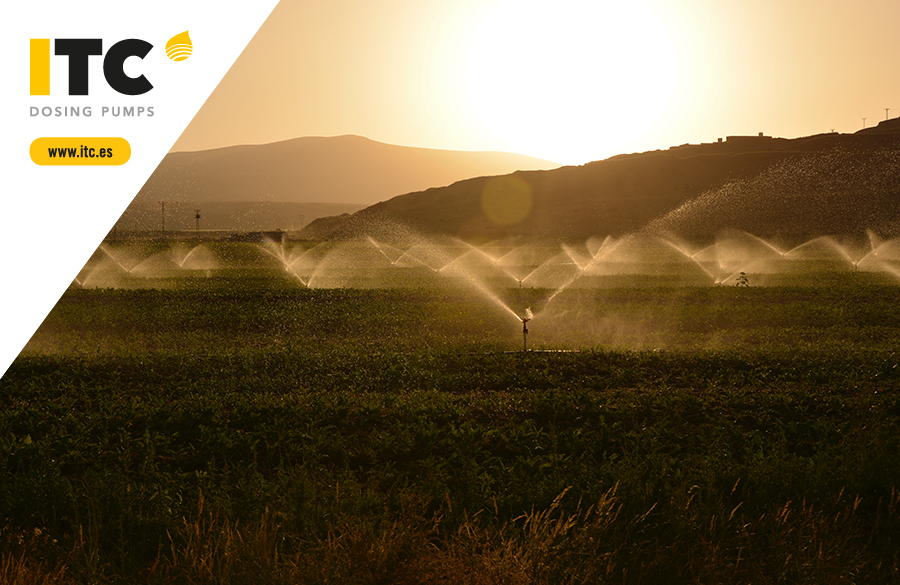Sprinkler irrigation: all key aspects
- 07/12/2022
- NAL 3
- No Comments

In agriculture, there are three goals that are constantly being pursued: optimising resources, producing high yields and preserving the ecosystem. Sprinkler irrigation is a pressurised irrigation system that achieves an 80-85% efficiency rate by applying water in spray or mist form evenly over the entire field.
In Spain, sprinkler irrigation continues to be one of the most widespread and commonly used pressurised irrigation systems due to its large-scale use in the agricultural sector. Therefore, this irrigation system accounts for a significant proportion of the country’s irrigation sector.
What do we mean by sprinkler irrigation?
As remarked above, sprinkler irrigation is a pressurised irrigation system that applies an even spray with the aim of achieving infiltration at the point where the droplets fall. With this type of irrigation we can irrigate larger areas of land with less water than other methods such as flood irrigation.
This sprinkling method can deliver an even spray across the whole plot of land. Additionally, we can control the intensity and frequency of irrigation to ensure that water infiltrates into the subsoil before spraying more liquid. This prevents the water from settling on the surface of the soil and evaporating without being used by the plants.
Types of sprinkler irrigation
There are two main types of sprinkler irrigation systems:
1. Stationary systems, which in turn can be:
- Fixed irrigation: the system is installed in one location that never changes, so the pipes are buried to ensure the system’s stability.
- Semi-fixed irrigation: mobile pipes (manual or motorised). These systems are designed to be moved easily and to cover large areas of irrigated land.
2. Continuous displacement, divided into:
- Movable sprinkler lines: with pivots, which move in a circular pattern; laterals, with frontal displacement; and sprinkler carts.
- Giant sprinkler: forward-facing laterals, wing on cart, travelling guns and reels.
Features of pivot irrigation systems
As mentioned above, pivot irrigation systems are movable, i.e. they are mobile systems that allow large areas to be irrigated. They have evolved significantly over time and can be divided into circular, mobile, corner or lateral pivots.
Overall, pivot irrigation systems provide a number of benefits, most notably:
- No obstacles on the land
- Up to 95% irrigation uniformity
- Increased wind resistance
- In the long term they are cost-effective
However, we also have to consider certain drawbacks such as longer irrigation times, which could pose a problem for areas with restrictions on irrigation times. Pivot maintenance is also expensive.
Sprinkler irrigation and fertigation equipment
Sprinkler irrigation is one of the most advantageous irrigation systems during fertigation. It should be noted that if the crops are on an uneven surface, a sprinkler irrigation system that is able to simulate natural rainfall using sprinklers should be used. In this case, fertigation equipment should provide low fertiliser concentrations and avoid leaf scorch.
Other irrigation systems suitable for fertigation are drip irrigation (water is supplied in droplets that achieve higher moisture in the plants) and micro-sprinkler irrigation (micro-sprinkler irrigation achieves a higher flow rate and better coverage).
Do you want to know more about fertigation equipment? Contact ITC now!


